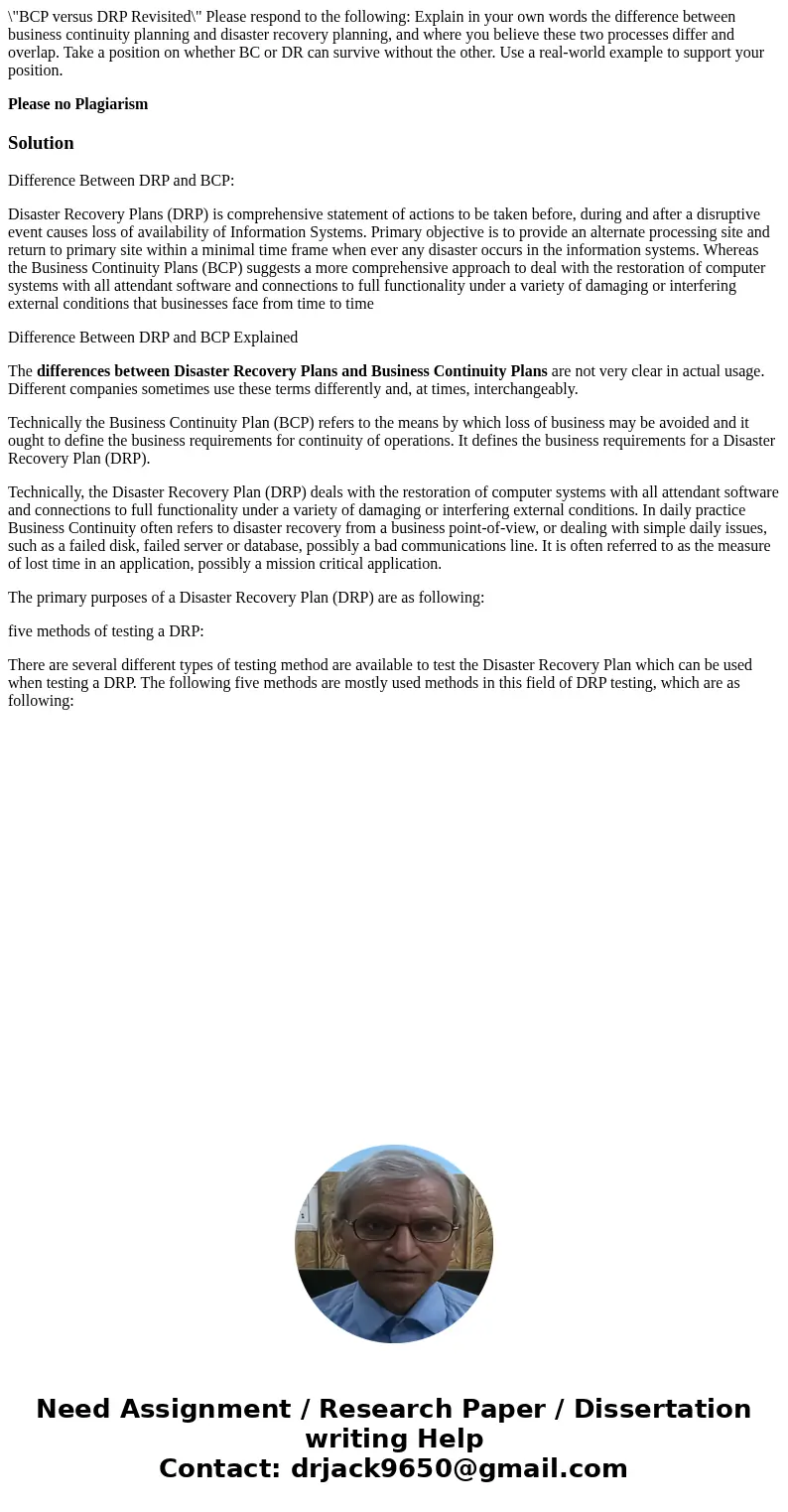BCP versus DRP Revisited Please respond to the following Exp
\"BCP versus DRP Revisited\" Please respond to the following: Explain in your own words the difference between business continuity planning and disaster recovery planning, and where you believe these two processes differ and overlap. Take a position on whether BC or DR can survive without the other. Use a real-world example to support your position.
Please no Plagiarism
Solution
Difference Between DRP and BCP:
Disaster Recovery Plans (DRP) is comprehensive statement of actions to be taken before, during and after a disruptive event causes loss of availability of Information Systems. Primary objective is to provide an alternate processing site and return to primary site within a minimal time frame when ever any disaster occurs in the information systems. Whereas the Business Continuity Plans (BCP) suggests a more comprehensive approach to deal with the restoration of computer systems with all attendant software and connections to full functionality under a variety of damaging or interfering external conditions that businesses face from time to time
Difference Between DRP and BCP Explained
The differences between Disaster Recovery Plans and Business Continuity Plans are not very clear in actual usage. Different companies sometimes use these terms differently and, at times, interchangeably.
Technically the Business Continuity Plan (BCP) refers to the means by which loss of business may be avoided and it ought to define the business requirements for continuity of operations. It defines the business requirements for a Disaster Recovery Plan (DRP).
Technically, the Disaster Recovery Plan (DRP) deals with the restoration of computer systems with all attendant software and connections to full functionality under a variety of damaging or interfering external conditions. In daily practice Business Continuity often refers to disaster recovery from a business point-of-view, or dealing with simple daily issues, such as a failed disk, failed server or database, possibly a bad communications line. It is often referred to as the measure of lost time in an application, possibly a mission critical application.
The primary purposes of a Disaster Recovery Plan (DRP) are as following:
five methods of testing a DRP:
There are several different types of testing method are available to test the Disaster Recovery Plan which can be used when testing a DRP. The following five methods are mostly used methods in this field of DRP testing, which are as following:

 Homework Sourse
Homework Sourse